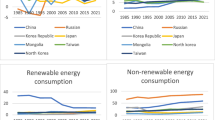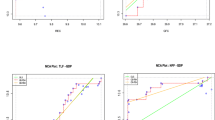Abstract
The aim of this study is to investigate the relationship between sectoral renewable energy consumption and economic growth in the US economy for the period 1950–2020 by using the Fourier component augmented unit root, cointegration, and causality analyses for the transportation, industrial, residential, electric power, and commercial sectors. Our results reveal in the long run that renewable energy will Granger cause growth through the new jobs it will create, the restructuring of the economy which is a prerequisite for replacing fossil energy with renewable energy. On the other hand, causal relationships are less stable and methodology and sector specific in the short run. Accordingly, the electric power and industrial sectors experience conservation patterns in terms of renewable energy consumption, while the growth hypothesis is confirmed for the commercial sector. Different implications are generated for each sector, which are now more important than ever given the current energy crisis in Europe and the urgent need to reduce dependence on fossil fuels.
Similar content being viewed by others
Notes
The KPSS test is superior to the ADF and/or PP tests in terms of detecting stationary of series that are close to I(1), whereas the FKPSS test is able to present efficient result when the number, duration, and form of structural breaks in series are unknown.
If one adds the maximum integration order (d) onto the lag length (i.e. p + d), then the Eqs. (10, 11, and 14) demonstrate a modified VAR model that the Toda-Yamamoto approach is based on.
References
Ahmad N, Aghdam RF, Butt I, Naveed A (2020) Citation-based systematic literature review of energy-growth nexus: an overview of the field and content analysis of the top 50 influential papers. Energy Econ 86:104642
Amazon (2021) Amazon increases renewable energy procurement by 40% in one year. AboutamazonWeb. https://www.aboutamazon.com/news/sustainability/amazon-increases-renewable-energy-procurement-by-40-in-one-year. Accessed 01 August 2022
Baumeister C, Kilian L (2016) Lower oil prices and the US economy: is this time different? Brookings Pap Econ Act 2:287–357
Becker R, Enders W, Lee J (2006) A stationarity test in the presence of an unknown number of smooth breaks. J Time Se Anal 27(3):381–409
Bhowmik R, Durani F, Sarfraz M, Syed QR, Nasseif G (2022) Does sectoral energy consumption depend on trade, monetary, and fiscal policy uncertainty? Policy recommendations using novel bootstrap ARDL approach. Environ Sci Pollut Res Int. https://doi.org/10.1007/s11356-022-22869-1
Bowden N, Payne JE (2009) The causal relationship between US energy consumption and real output: a disaggregated analysis. J. Policy Model 31(2):180–188
Bowden N, Payne JE (2010) Sectoral analysis of the causal relationship between renewable and non-renewable energy consumption and real output in the US. Energy Sources B: Econ Plan Policy 5(4):400–408
Bulut U, Shahbaz M, Vo XV (2022) Renewable energy-economic growth nexus revisited for the USA: do different approaches for modeling structural breaks lead to different findings? Environ Sci Pollut Res Int 29(20):30134–30144
Dash DP, Dash AK, Sethi N (2022) Designing hydro-energy led economic growth for pollution abatement: evidence from BRICS. Environ Sci Pollut Res Int 29(21):31252–31269
Davies RB (1977) Hypothesis testing when a nuisance parameter is present only under the alternative. Biometrika 64(2):247–254
Emirmahmutoglu F, Denaux Z, Topcu M (2021) Time-varying causality between renewable and non-renewable energy consumption and real output: sectoral evidence from the United States. Renewable Sustainable Energy Rev 149:111326
Enders W, Jones P (2016) Grain prices, oil prices, and multiple smooth breaks in a VAR. Stud Nonlinear Dyn Econ 20(4):399–419
Enders W, Lee J (2012a) A unit root test using a Fourier series to approximate smooth breaks. Oxf Bull Econ Stat 74(4):574–599
Enders W, Lee J (2012b) The flexible Fourier form and Dickey–Fuller type unit root tests. Econ Lett 117(1):196–199
Energy Gov (2022) Homeowner’s guide to the federal tax credit for solar photovoltaics. Energy.GovWeb. https://www.energy.gov/eere/solar/homeowners-guide-federal-tax-credit-solar-photovoltaics. Accessed 12 September 2022
Engle RF, Granger CW (1987) Co-integration and error correction: representation, estimation, and testing. Econometrica 55(2):251–276
Ewing BT, Sari R, Soytas U (2007) Disaggregate energy consumption and industrial output in the United States. Energy Policy 35(2):1274–1281
Gallant AR (1984) The Fourier flexible form. Am J Agric Econ 66(2):204–208
Gallant AR, Souza G (1991) On the asymptotic normality of Fourier flexible form estimates. J Econom 50(3):329–353
Gregory AW, Hansen BE (1996) Residual-based tests for cointegration in models with regime shifts. J Econom 70(1):99–126
Gross C (2012) Explaining the (non-) causality between energy and economic growth in the US—a multivariate sectoral analysis. Energy Econ 34(2):489–499
Hieu VM, Mai NH (2022) Impact of renewable energy on economic growth? Novel evidence from developing countries through MMQR estimations. Environ Sci Pollut Res 30(1):578–593. https://doi.org/10.1007/s11356-022-21956-7
Kraft J, Kraft A (1978) On the relationship between energy and GNP. J Energy Dev 3(2):401–403
Krauss C, Cardwell D (2015) A Texas utility offers a nighttime special: free electricity. New York Times https://www.nytimes.com/2015/11/09/business/energy-environment/a-texas-utility-offers-a-nighttime-special-free-electricity.html. Accessed 05 October 2022
Kwiatkowski D, Phillips PC, Schmidt P, Shin Y (1992) Testing the null hypothesis of stationarity against the alternative of a unit root: how sure are we that economic time series have a unit root? J Econom 54(1-3):159–178
Lee J, Strazicich M (2003) Minimum LM unit root tests with two structural breaks. Rev Econ Stat 85:1082–1089
Mahadevan R, Asafu-Adjaye J (2007) Energy consumption, economic growth and prices: a reassessment using panel VECM for developed and developing countries. Energy policy 35(4):2481–2490
Menegaki AN (2014) On energy consumption and GDP studies; a meta-analysis of the last two decades. Renewable Sustainable Energy Rev 29:31–36
Menyah K, Wolde-Rufael Y (2010) CO2 emissions, nuclear energy, renewable energy and economic growth in the US. Energy Policy 38(6):2911–2915
Nazlioglu S, Gormus NA, Soytas U (2016) Oil prices and real estate investment trusts (REITs): gradual-shift causality and volatility transmission analysis. Energy Econ 60:168–175
Omri A (2014) An international literature survey on energy-economic growth nexus: evidence from country-specific studies. Renewable Sustainable Energy Rev 38:951–959
Ozturk I (2010) A literature survey on energy–growth nexus. Energy policy 38(1):340–349
Payne JE (2009) On the dynamics of energy consumption and output in the US. Appl Energy 86(4):575–577
Perron P (1989) The great crash, the oil price shock, and the unit root hypothesis. Econometrica 57(6):1361–1401
Rehman A, Ozcan R, Badshah W, Radulescu M, Ozturk I (2021) Symmetric and asymmetric impacts of commercial energy distribution from key sources on economic progress in Pakistan. Sustainability 13(22):12670
Rehman A, Alam MM, Radulescu M, Alvarado R, Mihai D, Brutu M (2022a) A novel investigation to explore the impact of renewable energy, urbanization, and trade on carbon emission in Bhutan. Energies 15(9):2984
Rehman A, Ma H, Ozturk I, Radulescu M (2022b) Revealing the dynamic effects of fossil fuel energy, nuclear energy, renewable energy, and carbon emissions on Pakistan’s economic growth. Environ Sci Pollut Res 29(32):48784–48794
Rehman A, Alam MM, Ozturk I, Alvarado R, Murshed M, Isık C, Ma H (2022c) Globalization and renewable energy use: how are they contributing to upsurge the CO2 emissions? A global perspective. Environ Sci Pollut Res:1–4. https://doi.org/10.1007/s11356-022-22775-6
Rehman A, Radulescu M, Cismaș LM, Cismaș CM, Chandio AA, Simoni S (2022d) Renewable energy, urbanization, fossil fuel consumption, and economic growth dilemma in Romania: Examining the short-and long-term impact. Energies 15(19):7180
Rodrigues P, Taylor AMR (2012) The flexible Fourier form and local GLS de-trending unit root tests. Oxf Bull Econ Stat 74(5):736–759
Sadorsky P (2021) Wind energy for sustainable development: driving factors and future outlook. J Clean Prod 289:125779
Saikkonen P (1991) Asymptotically efficient estimation of cointegration regressions. Econ Theory 7(1):1–21
Sari R, Ewing BT, Soytas U (2008) The relationship between disaggregate energy consumption and industrial production in the United States: an ARDL approach. Energy Econ 30(5):2302–2313
Simionescu M, Rădulescu M, Cifuentes-Faura J (2022) Renewable energy consumption-growth nexus in European countries: a sectoral approach. Eval Rev:0193841X2211259. https://doi.org/10.1177/0193841X221125982
Somoye OA, Ozdeser H, Seraj M (2022) The impact of renewable energy consumption on economic growth in Nigeria: fresh evidence from a non-linear ARDL approach. Environ Sci Pollut Res 29:62611–62625
Soytas U, Sari R (2006) Energy consumption and income in G-7 countries. J Policy Model 28(7):739–750
Thoma M (2004) Electrical energy usage over the business cycle. Energy Econ 26(3):463–485
Tsong CC, Lee CF, Tsai LJ, Hu TC (2016) The Fourier approximation and testing for the null of cointegration. Empir Econ 51(3):1085–1113
United States Environmental Protection Agency (2017) Clean Power Plan: FACT SHEET: overview of the Clean Power Plan. Epa.GovWeb. https://archive.epa.gov/epa/cleanpowerplan/fact-sheet-overview-clean-power-plan.html.
United States Environmental Protection Agency (2022) Clean Air Act requirements and history. Epa.GovWeb. https://www.epa.gov/clean-air-act-overview/clean-air-act-requirements-and-history.
Vogelsang TJ, Perron P (1998) Additional tests for a unit root allowing for a break in the trend function at an unknown time. Int Econ Rev 39(4):1073–1100
Yale University (2023) Energy history: the oil shocks of the 1970s. Yale.Edu.Web. https://energyhistory.yale.edu/units/oil-shocks-1970s. Accessed 01 January 2023
Zachariadis T (2007) Exploring the relationship between energy use and economic growth with bivariate models: new evidence from G-7 countries. Energy Econ 29(6):1233–1253
Zivot E, Andrews DWK (2002) Further evidence on the great crash, the oil-price shock, and the unit-root hypothesis. J Bus Econ Stat 20(1):25–44
Availability of data and materials
All materials including data and econometric codes used for the empirical analysis is available upon request.
Author information
Authors and Affiliations
Contributions
The study conception and design were made by us. The abstract, introduction, literature review, discussion, and conclusion sections were written by Angeliki N. Menegaki. Material preparation, data collection, and analysis were performed by Can Tansel Tugcu.
Corresponding author
Ethics declarations
Ethical approval
We declare that all the academic and scientific ethical rules have been strongly followed in the preparation of this manuscript.
Consent to participate
Not applicable
Consent for publication
Not applicable
Competing interests
The authors declare no competing interests.
Additional information
Responsible Editor: Ilhan Ozturk
Publisher’s note
Springer Nature remains neutral with regard to jurisdictional claims in published maps and institutional affiliations.
Rights and permissions
Springer Nature or its licensor (e.g. a society or other partner) holds exclusive rights to this article under a publishing agreement with the author(s) or other rightsholder(s); author self-archiving of the accepted manuscript version of this article is solely governed by the terms of such publishing agreement and applicable law.
About this article
Cite this article
Tugcu, C.T., Menegaki, A.N. Revisiting the impact of renewable energy consumption on economic growth: sectoral evidence from the USA. Environ Sci Pollut Res 30, 44733–44745 (2023). https://doi.org/10.1007/s11356-023-25466-y
Received:
Accepted:
Published:
Issue Date:
DOI: https://doi.org/10.1007/s11356-023-25466-y




